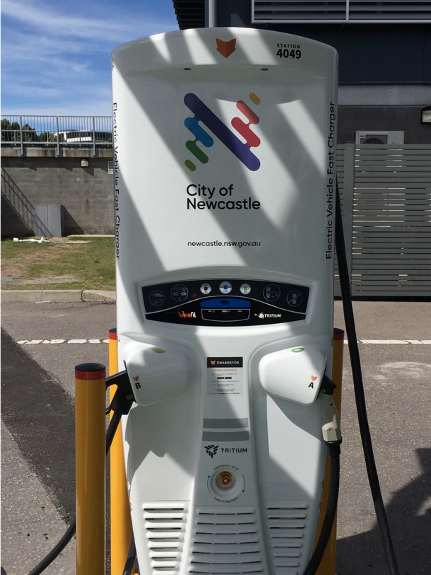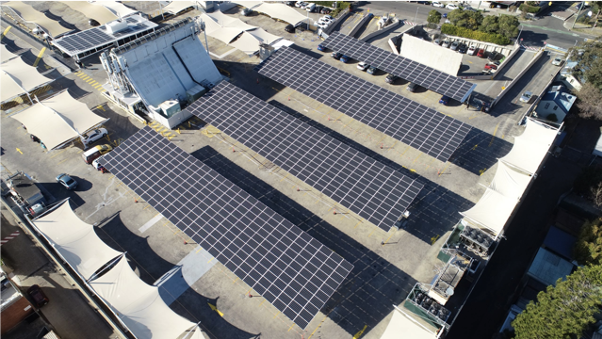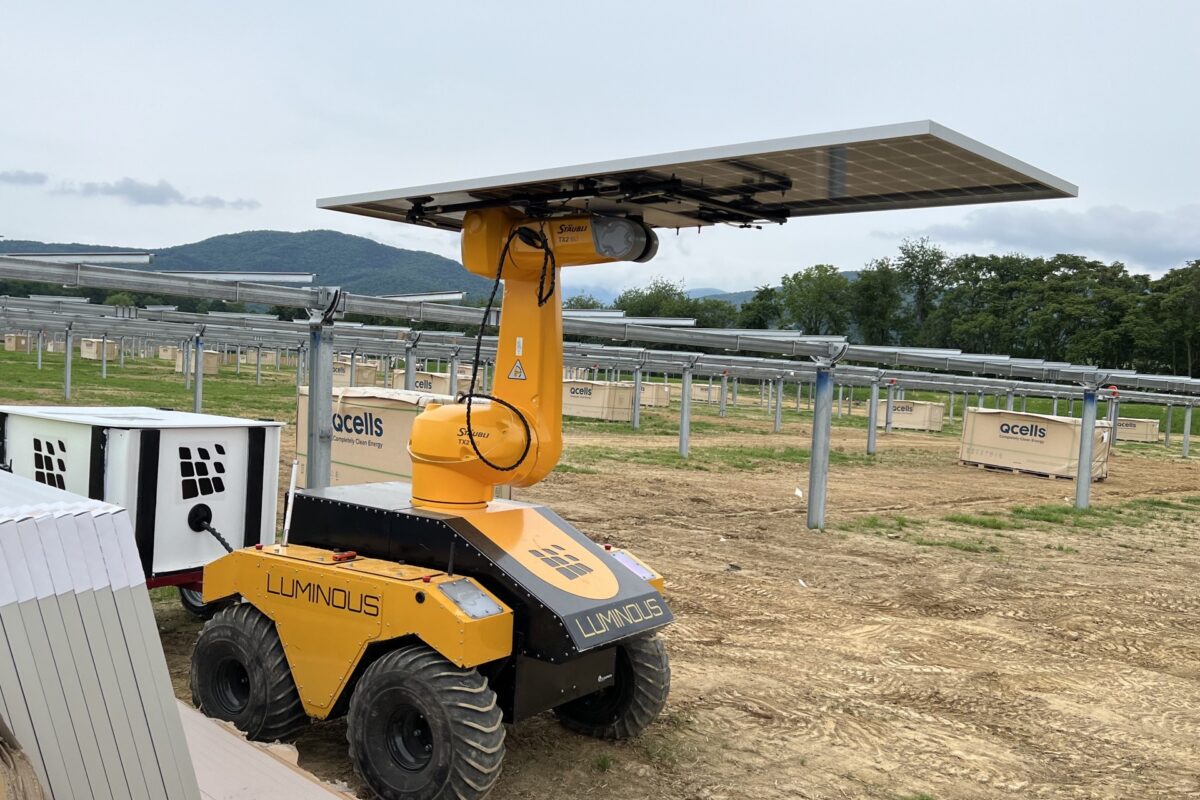Heliopark solar car park arrays can deliver comfort for shoppers, EV charging and good bifacial PV performance, claim developers Solar Car Parks. In March, Solar Car Parks announced a partnership with Schletter Australia to launch the Heliopark solar car park system in Australia and neighbouring countries.
The Heliopark system was designed and manufactured by Sydney-based Solar Car Parks. The structure was designed for Australian conditions, the developers claim. The Heliopark design was selected by Schletter Australia, the subsidiary of global PV mounting system provider, as its preferred solar car park system for the Australasian marketplace in March.
Construction of solar car ports was no easy task due to complex foundational requirements and building certification, the companies report. The partnership between Schletter Australia and Solar Car Parks attempts to de-risk the process by providing a fully wrapped solution to potential customers.
Daniel Chapman, Head of Corporate Sales at Solar Car Parks mentioned that “Solar Car Parks are delighted to be partnering with Schletter who have such a longstanding proven worldwide track record for quality solar mounting systems. We believe this partnership will boost solar car parking across Australia, to provide business owners and car park users the many benefits that solar car parking offers.”
About Solar Car Parks
The comfort delivered by solar carparks is easy to conceptualise. Imagine finishing your weekly shopping at the local mall, it’s summer and you are dreading the moment you have to go back to your overheated car. The shade provided by the elevated solar carport, often termed solar canopies, is obvious. Add to this power generation and EV charging, and the solution seems a compelling one.
The International Renewable Energy Agency (IRENA), in its 2019 Future of Solar Photovoltaic report, notes that solar carport uptake is increasing steadily driven largely by EV adoption and falling costs.
“Cost is indeed an important factor, as the application is moving out of the niche and into the mainstream,” the report authors write. “The price difference between rooftop PV and solar carports continues to narrow… Increased commercial-scale application is also driven by utilities, which are embracing distributed generation as a way to improve grid reliability.”
Additional advantages of solar carports include allowing facility operators to expand existing rooftop solar systems, providing a strong visual impact of a company’s action on sustainability and the aforementioned comfortable parking experience for customers and employees. It provides clean energy production and reduced peak demand costs and also “future proofs” for customer EV charging demand.
According to Paul Nealgrove, Project Developer at Solar Car Parks, the Heliopark system offsets energy consumption by feeding clean energy produced by the solar car park back to the main switch board, thus reducing the requirement for grid fed energy. It is also solar panel agnostic. To design the optimum car park solution, Solar Car Parks investigate site orientation, optimum cost efficiency, energy density, product selection and installation parameters.
Nealgrove says that solar car parks can be built on any above ground parking scenario, including ground based and multi-story buildings such as in malls, council buildings, sports facilities and theme parks.
He adds that by installing bifacial solar panels, extra light reflected off of the cars can be absorbed by these solar panels which also increases system performance. The design also offers the flexibility of modular design which can support single row or nose-to-nose parking.

Photo: Solar Car Parks
Installed systems
To date, Solar Car Parks has installed more than 30,000 m2 of solar car shades around Australia such as theLeichhardt Marketplace 330 kW system in Sydney’s Inner West and 4 MW combined system in Castle Plaza and Elizabeth Shopping Centre’s in Adelaide.
The National Australian Built Environment Rating System is a measure of a building’s energy efficiency and carbon emissions and compares it to similar buildings. In light of this rating system, Nealgrove elaborates that expanded solar capacity via a PV canopy can deliver a significant carbon reduction opportunity.
Charging EVs
Charging electric vehicles is another attractive feature of the Solar Car Parks. While shopping in centres, customers can charge their electric cars, which is offset by the clean energy produced that gets transported to the grid. Solar Car Parks offer three levels of charging capability including DC Fast Charger which can lead to electric vehicles travelling at least 70 km from a single 10-minute charge.
This content is protected by copyright and may not be reused. If you want to cooperate with us and would like to reuse some of our content, please contact: editors@pv-magazine.com.









I happened across the fantastic EV Charging /Solar carport setup at Newcastle Sports Ground. It’s the best set up I’ve seen! Thank you very much.
Now, I can only hope for a range domestic “Meccano-like” bolt-together “Solar Pergolas”. A range of these would allow home owners to get a great return on investing in Solar with the secondary benefit of filtered shade in a prior hotspot.
I believe if the Pergola was designed to ship flat-packed, be erected easily as a DIY project, wired up and commissioned by a licensed electrician, they’d sell heaps! Even IKEA would stock them!
John
0411211400
That is a brilliant idea!
If anyone would like more information please feel free to contact us hello@solarcarparks.com.au
and http://www.solarcarparks.com.au